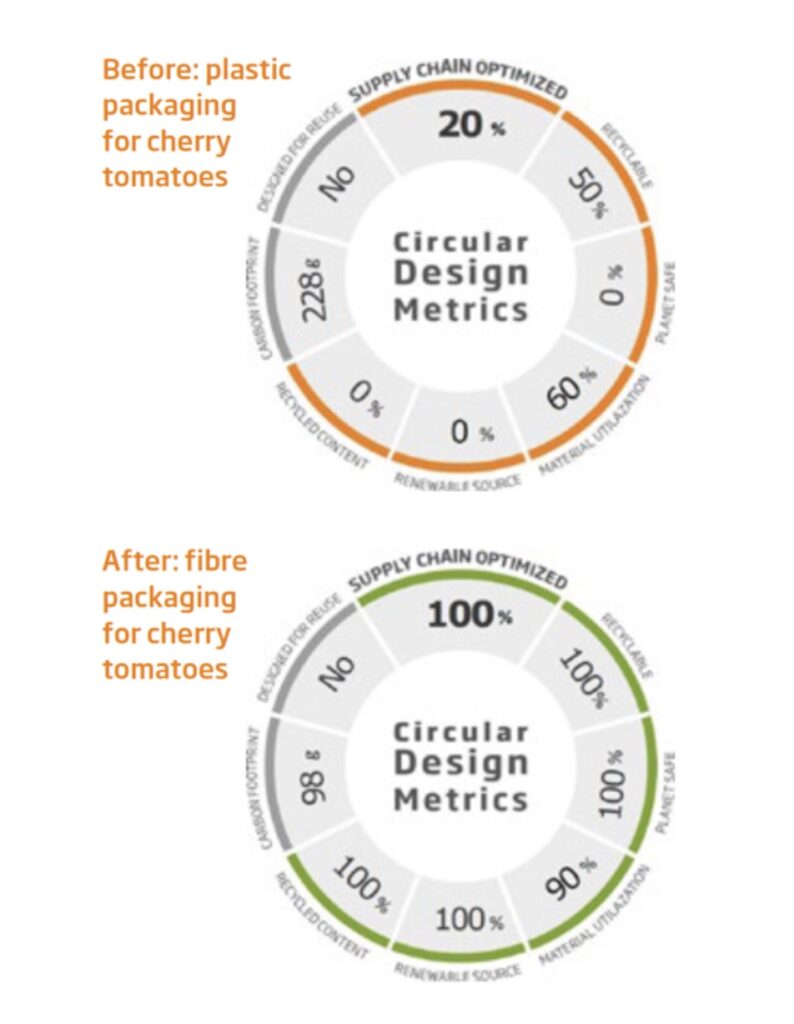Sustainable packaging company DS Smith announced that it has designed out over 313 million pieces of problem plastics in the last two years alone as part of its ambitious plastic replacement program. Knowing that the circular life of a piece of packaging relies on the consumer taking the correct action to recycle, DS Smith has also educated over 2.8 million people in the importance of the circular economy.
DS Smith’s designers have worked with their clients on their packaging and displays to replace or remove more than 3 million units of plastic per week, or 13,000 an hour, as its customers demonstrate a soaring demand for fiber-based packaging as an alternative to hard-to-recycle, single-use plastics. It’s well known that 80 percent of all sustainability savings come in the design phase, which is why DS Smith has trained all 700 of its designers in its circular design principals, developed in cooperation with its strategic partner the Ellen MacArthur Foundation, to translate their circular economy model into practical packaging solutions.
DS Smith’s designers have created thousands of innovative designs to eliminate even the smallest amounts of plastic in its packaging, such as replacing plastic sealing tape with self-locking cardboard flaps and swapping plastic labels with print direct onto cardboard. In the past year, its customers have asked for innovations to replace single-use, unrecyclable plastic items, including meal trays, plastic fruit and vegetable containers and plastic six pack rings.
“With our help, customers are responding to consumer demands to remove problem plastics from their products,” Allison Berg, Sustainability Manager, DS Smith North America. “By using our proprietary circular design metrics system, we can easily show not just where plastic can be replaced, but how circular their packaging is right now and where we can make improvements together.
“Our 700 designers have been trained in our circular design principles, which means we can design out problem plastics at the inception stage and find alternative fiber-based solutions that deliver sustainable, recyclable packaging.”
Circular Economy Lessons
Over the next year, DS Smith will continue to drive adoption of fiber-based alternatives amongst customers in response to consumer demand for plastic alternatives. It has also committed to continue past engaging 2.8 million people in the circular economy, with a goal of promoting circular lifestyles to 5 million people by 2030.

At COP26, it launched a circular economy lesson plan, ‘Let’s Go Circular!’ as a free resource for teachers to educate young people aged 11-14 about the circular economy, and how we can all play a part in protecting our planet’s natural resources. DS Smith also provides information through online content, videos, news articles, blogs and case studies in its goal of reaching 5 million people.
As part of DS Smith’s Now & Next sustainability targets, the company has an ambition to take one billion pieces of problem plastics off supermarket shelves by 2025, replacing them with sustainable, corrugated alternatives. DS Smith’s plastic replacement work and wider sustainability progress can be found in its latest sustainability report.
R&D Into Other Alternative Fibers
One way DS Smith is doing this is with an investment of $140 million into R&D which is exploring a range of natural fibers. These include innovative uses of seaweed, straw, hemp, miscanthus and cotton, as well as from less common sources such as the daisy-flowered cup plant and agricultural waste such as cocoa shell or bagasse – the pulp fiber left over after sugarcane is processed.
